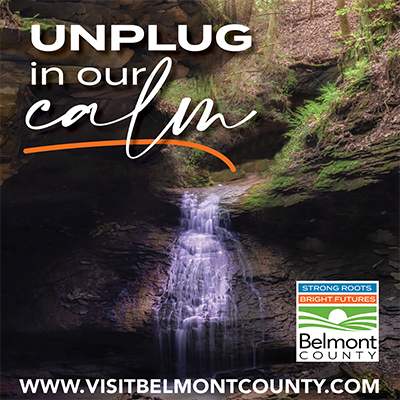
When I placed a box turtle in front of a teenager and she screamed, “Get that snake away from me,” I knew I loved being an Ohio Certified Volunteer Naturalist (OCVN). Bob Schang, also an OCVN, and I were speaking about turtles to a group of intercity students. That was the first time that many of them had seen a turtle, ever.
A year earlier, I had read about the OCVN program offered at The Wilderness Center in Wilmot, Ohio. As a program of The Ohio State University, volunteers receive research-based scientific training emphasizing hands-on natural resource education. After certification, OCVNs provide community-based volunteer service for an agency or organization whose mission is compatible with that of the program, which is to promote awareness and citizen stewardship of Ohio’s natural resources through science-based education and community service. Among the places to volunteer are park districts, state parks, universities and other educational institutions, arboretums and nature centers.
Together with my 78-year-old friend Schang, I signed up for 40 hours of classes focusing on plants, geology, reptiles/amphibians, birds, mammals, insects, watersheds, and interpreting the natural world to audiences of all ages. Classes were taught by Carrie Elvey, Senior Naturalist at The Wilderness Center, with guest lectures provided by OCVN alumni.

A science degree was not required. In Elvey’s words, “Classes were designed to give students an overview and the skills and language to explore the topics they find most interesting. There are no pre-requisites for the class, just the desire to learn and explore.”
With other like-minded people, we enjoyed the instruction and also hiked the trails at The Wilderness Center to study botany, observe salamanders, and dip net. At the end of two weeks, we passed our tests and joined the OCVN family, which through Wilderness Center classes alone numbered more than 200 people who ranged in age from 16 to 82.
We also had to complete 40 hours of volunteer service, which Schang and I did by participating in StoryWalks® at libraries. Pages from children’s nature books were used to create signs along a trail that ended with us introducing readers to salamanders and turtles. We also cleared trails of invasive garlic mustard plants and helped at Herpetology Day.
Volunteering is key to the program; to remain certified, an OCVN must complete 20 hours of service annually. It is also something that OCVNs love. One of Pat Tirabasso’s (Class of 2008) favorite experiences was a 3-year period of monitoring snake tins around Wilderness Center property. “Having never really handled snakes, but enjoying data collection, made it interesting for me. I learned so much and have really enjoyed taking people out to meet these beautiful creatures, and introducing visitors to some of the things they can appreciate about them,” Tirabasso recalled.
Jean Paddock (Class of 2009) gets in many of her hours at the Canton Local Schools annual 5th Grade 2-day camp experience where she sets up a science station. Paddock states, “We’ve done all kinds of things from orienteering with manual compasses to stream study to nature observation to skulls/pelts identification. Some of the kids have never been outside or played in nature before – like ever, at all. To allow them the freedom to discover, touch, and play in the woods and water is amazing to watch and facilitate.”
Education, both of the public and OCVNs, is the other program focus. To remain certified, an OCVN must take 8 hours of natural sciences training each year. Many nature centers like The Wilderness Center offer this training. The OCVN program requires commitment, but it’s worth it. Tirabasso’s advice for anyone considering the program is to just do it. “No one regrets becoming an OCVN. It can only enrich your life and, hopefully, you can spread your excitement to someone else along the way.”
And while the program is about education and not advocacy, it embraces the philosophy of Freeman Tilden, whose seminal work, Interpreting Our Heritage, discusses the six principles of interpretation and is recognized as required reading for anyone pursuing a career in the field. Tilden says, “Through interpretation understanding, through understanding appreciation, through appreciation protection.” I can’t speak for all OCVNs, but this resonates with me.
Paddock says, “Right now, today, our planet and the future of our natural resources is so very fragile in a way that has not been true before. If you love the outdoors and want to protect and promote the human/nature connection, then you have to act. There’s no one else that’s going to do that. Only you, Interpreting nature for others isn’t a grand act; it’s small gestures of being present to help another experience nature on a personal level. If I’m not acting on my passion for the outdoors, who will?”
To learn more about becoming an OCVN, contact Anne Baird, State OCVN Program Coordinator. You can email her at baird.41@osu.edu.
Being an Ohio Certified Volunteer Naturalist






